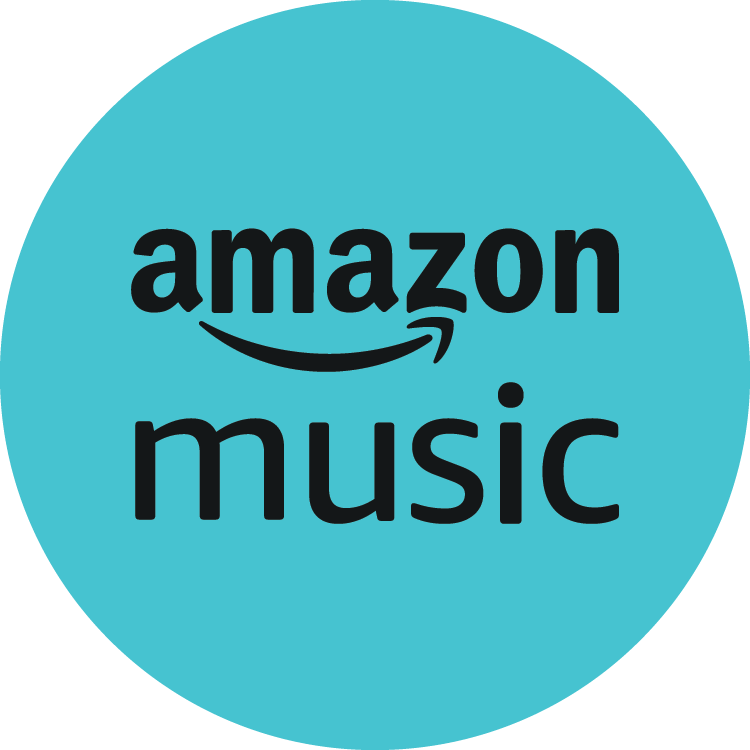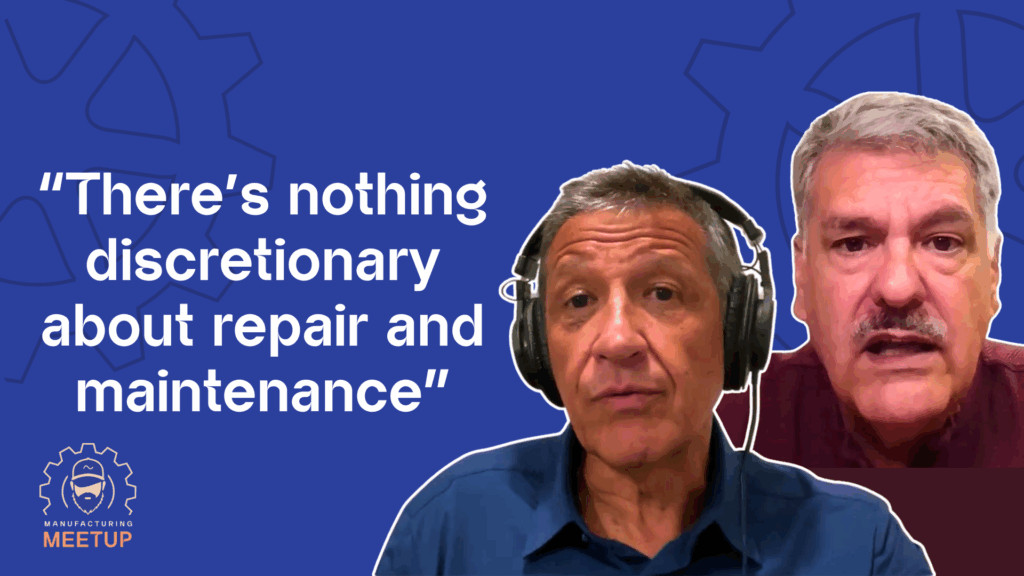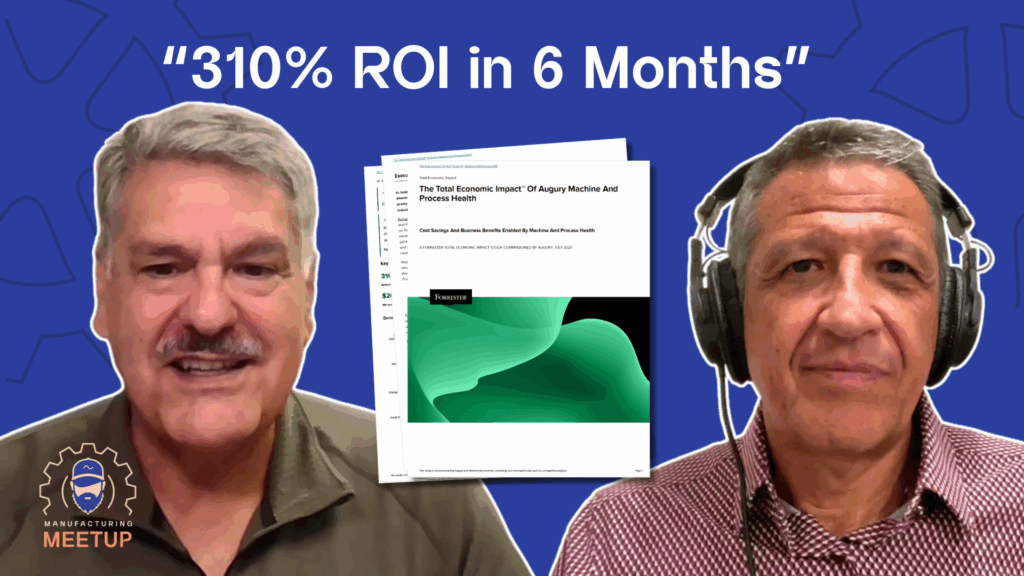Can U.S. Manufacturing Compete? 3 Surprising Truths
Ed’s rocking his Harley Davidson hat, and Alvaro’s got golf on the brain as they tee up the question everyone’s asking: Can American manufacturing actually compete in 2025?
Spoiler: Their answer might surprise you.
From Crayola’s decision to stay put (and dominate 80% of their market) to robot dogs sniffing out air leaks, the guys break down why “Made in USA” might make more sense than you think. They’ll explain why your product getting touched 10 times before hitting the shelf is a problem, how Zippo lighters prove their point, and why Ed’s wood pallet story will make you rethink everything about long supply chains.
Let’s keep the conversation going—comment, leave a review, or email us at mmu@augury.com.
Mentioned in this episode:
Friendly Floatees Rubber Duck Spill
Cranky the Robot
Crayola’s now-CEO leaned into automation when everyone else was offshoring and now he’s reaping the rewards
Lodge Cast Iron Cookware
Zippo Lighters
Download the full podcast here:
Apple
Spotify
Amazon Music
iHeart Radio
YouTube Music (formerly Google Play)
Full Transcript
Ed Ballina
Hello there manufacturing buddies and peeps. We’re coming to you again. We started this tradition about wearing these different hats. I think I have enough for maybe a year or two. Then we’ll have to figure it out. But, today’s hat is a Harley Davidson, a Sportster 883 border hat. Okay. I actually had one of these when I lived in Helotes, Texas. And yes, I was, I did experience the Harley kiss. Any of you don’t know what that is, that’s when you bake the inside of your of your leg against the hot exhaust pipes and it leaves you a Harley kiss. Yes.
Alvaro Cuba
⁓ yes, now I understand. Yes.
Ed Ballina
Now you get it. But, I wore it today cause we’re going to talk about American industry and what American industry is more iconic than Harley Davidson motorcycles. So that’s the story with the hat. And now my buddy Alvaro has got a cool story about his hat.
Alvaro Cuba
Absolutely. This is my golf hat. And you guys will love this story. A friend of mine told me, ⁓ it’s like when I just started, your game is like salespeople forecast. I said, how is that? Well, you overestimate how far each ball will go and your accuracy is just, only if you can find the ball, you are okay. But if you want to improve what he said is I should take the supply chain approach. And what is the supply chain approach? Ed, you will love this. Distance control based on proven capability. Is what you’re talking all the episodes. And the accuracy has to be within some parameters.
So let’s say the fairway. Since then, my game has improved not as much, but supply chain guys, you will understand this as I did. ⁓
Ed Ballina
That is a riot. The sales guys version of that is, yeah, but we don’t take 10 minutes to swing the club. Calculate. Oh my God. We love them. We love to hate them, but we love them. They really are our partners. So, welcome to another podcast of Manufacturing Meet Up. This, by now you know, is the show where we kick back. We talk about our experiences on the shop floor.
Alvaro Cuba
That’s true. And we can go on and on with our friends in sales. Yes.
Ed Ballina
We try to keep it real and understand what it takes to be efficient on our plant floor. So let’s talk about it.
So, team, a lot of conversation really over the past several years about American manufacturing and insourcing, and of course ever more prevalent now that we’ve got this discussion about tariffs. And everybody by and large agrees, as you’ve seen us talk about, that we want to bring manufacturing back into the US. The question is,
Are we competitive enough to do that? We’re here to give you our own opinion, which hint it’s going to be yes, of course. But it’s not easy, folks. And in today’s world, we’re talking about real competitiveness, not just having the cheapest price, because there’s a lot that happens behind the scenes in building excellence from the time you develop the product until you put it in the hands of a customer.
And we think America has an edge when it comes to that. So Alvaro, your thoughts.
Alvaro Cuba
Yeah, I was just going to bring in an example actually, 2007, five, seven, 10 in that area, that time when a lot of companies were going out and the trend was, I need to produce where the cheapest labor is or outside and bring it and all that. One company, Crayola, they produce crayons and a lot of more art supplies.
And they decided to go the other way. And they decided to stay in the US. And right now, 15 years later, they have 80% on the market. Their brand is great. Their strategic pricing is perfect. They can compete with anybody. And they can differentiate. So they use Lean Six Sigma, they train their people and they automate it. So like, like Ed was saying, the important part to putting all the pieces together.
Ed Ballina
Absolutely, we’ve proven we can be competitive. So wow, there’s so much to unpack here. We could spend a bunch of time on this, but I’ve already decided we’re gonna boil this down to three key elements or seconds. Okay, the first one we’re gonna talk about is the difference between long and short supply chains. Because there’s differences in speed, there’s differences in scale and customization that we think make “made in America”, advantageous. Listen, everything else being equal, geographical closeness is better than geographical distance. I mean, everybody kind of understands, you know, but sometimes you don’t realize what a competitive advantage it is to be in the same continent or the same landmass as your customer base. And they go beyond shipping costs. So for example, product design and collaboration. When you start creating a product, there is a tremendous need for interaction, collaboration between marketing, between engineering, between the production folks, et cetera. When you’re separated by an ocean and 8,000 miles, and God knows how many time zones, I’m sorry, as good as our systems are today, they don’t take the place of that personal interaction that allows decisions to be made in minutes, days, instead of weeks.
Factory acceptance testing. I’ve done several of these where you’re literally flying, you know, to across the pond or across the ocean one way or another to check the equipment out. It’s expensive. You have to go out there. You have to spend a whole week because even though the test may only be a couple of days by the time you get there and back. And it’s not like you’re going to be able to go back and have repeat visits. So if I have to do an FAT in Shanghai or in Milan, there’s a difference between doing it huge, right? But if I just have to fly to Detroit, right? Or Dallas, Texas, big, big difference. So those are a couple that I would point out. Also, when you come down to your handoffs, right? If you think about product that comes from China, you have to take that product from the facility where it’s made, ship it by truck or rail to some sort of a shipping station. Maybe you already put it in containers at your facility. But then it goes on the ship. Now it goes across the ocean, comes back into the US. You have to unload it, put it on trucks. You have so many handoffs. By the time that product gets on the shelf, it’s been touched 10 times. Do you think there’s a higher risk of damage, contamination, et cetera? Absolutely. Absolutely.
And the reality is sometimes those ships get lost, right? Or the containers fall off, right? Think about the rubber duckies that, you know, became a thing, you know, that float around everywhere, whatever. And I’ll just give you a quick example of a phenomenal American manufacturing company, aside from Harley-Davidson, and that is Lodge Cookware. So I happen to have some of the cast iron frying pans and Dutch ovens and all that.
Ed Ballina
And let me tell you, they are amazing, old fashioned, right? But they work great and it’s just, they’re indestructible. Hey folks, they’re made in Tennessee, made in the United States, right? And I mean, their benefits, right, are huge. Think about it. They want to launch a new product. How quickly do you think that product can get on the store shelf if it’s coming out of Tennessee, right? How quickly can you turn around and deal with supply chain issues when you’re sitting in Tennessee? Not only that, they offer, I believe, a lifetime guarantee. There are some other companies, some boot companies in the US that offer the same thing. Danner boots, even though they’re not all made in the US, if you wear the sole out on a Danner boot, you send it back to them, they’ll re-sole it. So sustainability is also a story here. So Alvaro.
Alvaro Cuba
Let me add one another example to what you were saying, which is Zippo lighters. For sure you have seen it. And three or four things to illustrate the points that we are making. One is this concept of windproof. So you can light no matter the wind. That’s a huge differentiator. They customize. I don’t know if you have seen it.
But everyone and they can change in campaigns. What are the pictures and photos that come in every lighter? And they offer repairs for free lifetime all the time. So how you can get these if your supply chain starts in the other end of the world? No. So agility, responsiveness, resilience like in this example, the only way to do it is if you are here, if your marketing and your supply chain people are together, if you can change fast and quick, if you can adjust your production. So remember the pandemic just passed. Every company that had long supply chains, was a nightmare.
No? The companies that had it in the bag, it was so much easy. And then if you want to customize and you want that agility to change things, it’s very important to have it close. And your suppliers can become, in reality, they are part of your supply chain.
And if they are in your backyard, quite a difference. And cost is a big factor always. Yeah, but labor out there is cheaper. But then put all the things together, the end to end. So yeah, some costs could be cheaper there. But then how expensive is the containers breaking through to, to the ocean, the waste that Ed was talking, the quality issues that you have, what you lose in agility, the increasing stocks that you have to have. Because if your supply chain is long, your stocks are going to be long. So by the time you put all together the possibilities to react to the the cost end to end, the cash flow that you have to invest, it’s a very good option made in America.
Ed Ballina
It most certainly is and one quick example. I wanted to share of unexpected consequences and this happened during the pandemic. We had to get, I was working with a beverage company and cans were coming in from as far away as Dubai and we’re accustomed to having our can, empty cans come to our facilities in plastic pallets. Very, very clean. They don’t carry much dust. Now these are great pallets are coming in but they, a wooden pallet generates wood dust. It just does. And because of that, the equipment wasn’t running as efficiently because their normal cleaning cycle didn’t take into account the added wood dust that came into pallets. Who would have known? But that line was losing five to six efficiency points. And never mind how far they had to come across the ocean, right? So, ⁓ no, it’s a, there’s a lot of unknowns.
Alvaro Cuba
Yes. And more unknowns, the larger and the more time that your supply chain takes, the unknowns multiply, is much, much more difficult to forecast, to predict, and to react. So that was the first topic. The second topic we wanted to bring, as Ed said, we can touch in several topics, but we decided to prioritize in three.
The second is cheaper labor versus nowadays, as we have been talking, smart tech-enhanced labor. I think as we discuss in other episodes, the possibilities, the power behind a partnership between AI and the new technology and the operators, it’s huge, no? Learning companion, co-creation, real-time feedback, skill acceleration, enhanced collaboration, just to mention some of them. In which country that’s better and faster and easier to do than here in America, with all the new technology which is here.
No, and the new generation, especially Gen-Zs, they are so willing to go into the trade. A lot of them don’t want university. They want to go into trade. And now we can offer a lot of things to them thanks to AI and the new technology. So that’s one. The other is all the possibilities I was hearing about gamification. This is the word that is out there all the time. Use the same methods as games, like when you are playing on the screen and all that, to train people. And the new generations love that. There are very good examples. In here, I was reading John Deere.
For instance, the Power System Division, they are teaching their people how to collaborate with robots and automation. And they decided to call Cranky the Robot is the example. So to make it a friend and to explore all the collaboration.
No, another example is P&G, is doing some pilots on lights out, which is the entire night close the plant, put it there. The impact on the people is now you can work four days a week instead of five days a week. And that gives you flexibility, that gives you space to do other things.
There is a lot that we can do in America putting these two things together. And it’s not about, and we said it many times, it’s not about replacing the people. It’s more about effectiveness, efficiency through the collaboration of the two. So if we can get that, nobody’s going to beat us even in cost or in effectiveness and efficiency because our people tech enhanced will make it happen.
Ed Ballina
It is the enabler that will also help us address the ongoing labor struggles that we’ve been talking about ad nauseam almost on every one of these calls. It’s huge and it’s getting worse.
Alvaro Cuba
Yeah, the gap is huge. It’s more than a million right now, more than half a million right now, but…
Ed Ballina
Yep. It’s only going to get worse. So we have to figure out how to, how to at least absorb some of that. There’s other activities that I’m sure will go on to help alleviate that. But there’s a real, as Alvaro was saying, some real examples of automation out there that enable the factory floor worker, right? I was talking to a chief supply chain officer for one of my beverage clients, and he was describing to me,
I don’t know what they have yet, but they are getting a Boston Dynamics robot dog. He called it a dog. Okay. That walks up and down the lines with infrared and ultrasound sensors checking for air leaks. Right. You would not believe how much money we throw away because of air leaks. Right. Sustainability. Big opportunity there. Right. But imagine your worker is now going to have this, this helper, you know, I don’t know, you know, Toby the dog, that’s gonna walk around and go, hey, there’s an air leak up there, can we take care of that? Or hey, as I walk past this bearing, I noticed my infrared sensor that it’s getting hot. And I have the history of what that temperature has been for the last three months, and there’s a problem. That is already here, right? Not that it’s coming, it’s already here. And so then you ask yourself, well, what does that mean for the employee?
Well, they don’t have to do work that sometimes is ergonomically difficult for them, right, or almost impossible to do, and they can upskill. So those robots are gonna need somebody that maintains them, that checks their batteries, right, that deals with any control issues, and those skills we don’t have right now. So how do we retrain our employees? And I was listening to a podcast where they were talking about the opportunity for people to code without coding. There is an app up there, I haven’t looked at it, where you could actually speak to it and it’ll code for you. So it just opens up a world to people that wouldn’t have access to it.
And then there’s virtual, you know, vertical integration opportunities. Best example that I can give you for that is what happened with plastic bottles and most of CPG. In the old days, as we used to say, we used to buy empty labeled bottles from suppliers, right? And they would come in, we would depalletize them, and all that other stuff. Fast forward to today, almost everybody’s blowing their own bottles, labeling their own bottles, and in many cases, they’re making their own pre-forms.
They found an opportunity to virtually integrate. And when we’re talking about distances, let me tell you something you may not know. When you have a PET bottle sitting in the sun for a couple of days, it is going to shrink and it will not run in your filler. But when you’re blowing that bottle 150 feet away and it’s getting to your filler within a few seconds, how quickly do you find a quality issue? Like that? So.
Alvaro Cuba
And even if in that example, if you go to a third party, is the famous hole in the wall and you have the supplier in the next room producing the bottles, the plastic bottles and sending you through this hole and then you are just filling those.
Ed Ballina
Yeah, right, right there. Through the hole. We have that in a number of locations where you’re literally leased to them half of your warehouse and there’s a hole in the wall. When the bottles come through, they’re yours, brother. Anything beyond that? No, the supplier owns. So a lot of great examples there. Let’s move on to kind of our, well, I could mention Lodge again, but we have given those folks so much airtime that there better be a new cookware set in my house after I’m done with this.
We’ll move on from there. Hey, I’m sorry. That’s a joke. Okay, do not, I already have one I use it. Okay So segment number three, what is the quality advantage right, like, you know isn’t good enough, good enough? It depends right? I would tell you that in general our manufacturing standards, right? Big “S” right? Across the board are significantly better than most other countries that we import product from. I’m not saying everybody, so don’t kill me for that generalization. By definition, they’re all wrong, but in general… So food safety standards. We have seen in the last 20 plus years in the United States a complete revamp of our food safety systems, right? Dictated by the federal government. As a recipient of that, let me tell you, not fun, okay, but it forced us to be better.
Much better. In some of these countries, you don’t have quite the same safety standards, right, when it comes to food safety. In general, consumers know that goods that are made in America can be trusted, right, not to blow up in your hands. We have, you know, UL rating, Underwriters Laboratory and all. We have all these checks and balances. Generally, stuff we buy here is good. Okay. When was the last time we had a flat tire?
I mean, when I was young, yeah, you carry everything, but I can’t even remember the last time I had flat tire, right? So we’ve made these products that run forever. And then, brand protection. In the US, I’m sorry, regulatory compliance. There’s no joke. You have an FDA audit and having been on the receiving of that, I will tell you, those people will not even accept a bottle of cold water from you, right?
They come in with their food, with their beverage. There was nothing but the space and your records and an inspection. There is a certain amount of confidence that that gives me as a consumer, right? Are we gonna have an occasional issue here and there? Yes. No system is perfect as much as we’d like them to be. But man, I’ll trust something bottled, you know, put together in the United States over many other countries that are out there.
And then the last one that maybe doesn’t come across all the time is, well, we can always be better. In general, the treatment of employees in the United States is pretty darn good. We have good safety standards, we have ethics, and most companies have core values that if you violate, you get thrown out real fast. Some of these other countries, their use of labor, frankly, could be a little questionable or sketchy.
You know a lot of, a lot of reasons why Made in America is a sign of distinction and trust. So.
Alvaro Cuba
Yeah. And I can attest to that having grown up in Latin America, born in Peru.
Even outside, no? If the product comes from Germany, U.S. Japan, great quality. If not, okay, let’s check. No, but America has gained, the U.S. has gained this for years and years, this trust in the consumers, and even more in Americans, of course. But a couple of other things on quality. For me, quality is about competitive advantage. If you get the trust, and we already talked, it is there. With quality, you can, for instance, quality as a performance. Ed was mentioning the tires, or cars, or anything that you buy. We were talking about Zippo lighters, anything that you buy and works, and works every time. It’s perfect on that. It becomes a differentiator. It becomes a competitive advantage. And then the other one, Ed was talking about brand protection, which is very important, but it’s also brand attraction. Brand protection is okay, protect the brand and quality issues can damage a brand, but a good brand with good attributes, it attracts people. You go to the supermarket, you go to the shelf and you say, I don’t know, I don’t know, I don’t know. ⁓ I know that one and I don’t know that one. And on top of that, ⁓ this works better. No? Or this is more sustainable or things like that. Immediately. That’s the one you buy. So I think quality in American products can make a huge difference on top of the others that we have been discussing. Yeah.
Ed Ballina
You know, one of the real pleasures that I get out of these podcasts is to hear your stories because they parallel mine so closely that it’s almost scary. I mean, most of the people that have watched this podcast know that I was born in Cuba and I left Cuba when I was nine years old. So in Cuba, when you got shoes, they were usually made in Bulgaria, Bulgaria or some place in the Soviet Union, the old Soviet republics, they were plastic, they were hard, guaranteed to chafe your feet and give you mushrooms in that tropical climate. Anything that said, I didn’t speak English back then, anything that said made in USA for me, gold standard, that made in USA. I knew what it meant, I couldn’t pronounce it, but if it said made in USA, you were guaranteed to have a top notch product. All the product coming off on the communist countries and the Soviet block, not so much. So, not to, not to beat our drum a little bit too much, but, ⁓ we’re getting ready to wrap this up. And I would tell you if you haven’t kind of gotten that message yet, we’re bullish in America.
We’ve got amazing engineering, R &D, right? When you think about what happens in Silicon Valley and not just there, Austin, Texas, even in the heartland of the United States, we’ve got amazing knowledge and intellectual property here. We have one of the best logistical transportation systems in the world, okay? We can put it across the country by trail, by train, by bus, by truck, by whatever.
It takes, in the old days, I think I remember 21 or 14 days to get a rail load of soda from the one side of Russia to Siberia. We don’t have those kinds of issues here. We’re a lot closer linked. A huge domestic market. And one other thing, folks, relatively low energy prices. Okay. That may strike some interesting conversations, but the fact is the fact. The United States has some of the lowest energy prices in the world.
Which is a huge enabler. So, Alvaro?
Alvaro Cuba
Yeah, I totally agree with you. I think we have it all, what it takes. Even when you didn’t mention, but it was impressive to me when I came to the U.S. is the level of a specialization. There is no other country in the world where you can find the careers or the specialization in trade that you can find in the U.S. because the scale and the economics in the U.S. make it possible. So we have the people, the specialization, we have the quality, we have the brands, the R&D, the engineering, you name it. It is about how we put it together, how we make it happen. And I don’t know if you’ve already seen the Formula One movie that just came with Brad Pitt, by the way, amazing. Check it in… Go to IMAX because you have to, you have to feel it. But one thing that they talk about is how putting all together in the car, every one part, the mechanics, the car, the pilot, the engineers, the director, everyone was putting one second into it. And when you take one second in 68 laps or 72 laps, that’s the difference between the winner and not so winner. So if we find a way to put it all together and connect these pieces, nobody can beat us. So let’s go for it.
Okay, so time to finalize this podcast. As always, it’s great to have you with us. Please give us reviews or like us wherever you are watching us. And more important than that, please bring your pals. Talk to them, send us your questions, send us your thoughts. We are completely open to your suggestions. So bring it on and we’ll make it happen.
Ed Ballina
Absolutely, we want more and more participation, but I would not be fair if I didn’t call out a key difference between Alvaro and I, as close as we are and our backgrounds. Listen to the sports he talks about, right? It’s the high class stuff. It’s F1 racing, it’s golf, it’s soccer, right? Tennis, right?
There’s a reason my family calls me the Cuban redneck. I talk about hunting, fishing, running around in four-wheel drive vehicles and food plots. But that’s what makes us great buddies, right?
Alvaro Cuba
More important, you promise you are going to teach me. Yeah, you are going to take me out for that.
Ed Ballina
I’m going to take you. There may be a special bloopers episode if, if, if he actually comes up here, it might be a little scary, but enjoyable. Anyway, I got to bring this home before our producer gives me the yank. So if you want to keep this conversation going, you can email us at mmu at augury.com. We’ll also have the link in the show notes and we’ll see you next time.
Meet Our Hosts

Alvaro Cuba
Alvaro Cuba has more than 35 years of experience in a variety of leadership roles in operations and supply chain as well as tenure in commercial and general management for the consumer products goods, textile, automotive, electronics and internet industries. His professional career has taken him to more than 70 countries, enabling him to bring a global business view to any conversation. Today, Alvaro is a strategic business consultant and advisor in operations and supply chain, helping advance start-ups in the AI and advanced manufacturing space.

Ed Ballina
Ed Ballina was formerly the VP of Manufacturing and Warehousing at PepsiCo, with 36 years of experience in manufacturing and reliability across three CPG Fortune 50 companies in the beverage and paper industries. He previously led a team focused on improving equipment RE/TE performance and reducing maintenance costs while improving field capability. Recently, Ed started his own supply chain consulting practice focusing on Supply Chain operational consulting and equipment rebuild services for the beverage industry.



